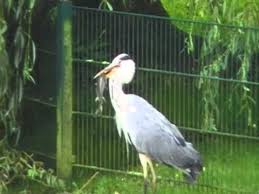If you have a pond or large containers you can grow fish. Trout always needs running water. Ide (or orfe, Leuciscus idus), (common) rudd (Scardinius erythrophthalmus) and tench (doctor fish or Tinca tinca) tastes good and you can keep them in stagnant water. Also, European carp (Cyprinus carpio) is widely cultivated. Since the Middle Ages, especially monks, gained experience here. Ponds were often clay or peat pits. Sometimes streams were diverted, or in low lying areas were made walls such as of rice fields. If the upper pit defected, the next was filled.
If there is not only supply but also drain, you can deflate the puddle. That's easy to harvest fish. It was also common after one (or more) years to overgrow the empty lake with grass and graze. Thus was received a kind of crop rotation where the next generation of carp again found plenty of food in the new soil.
A healthy carp can be up to 65 years. In our region, carp becomes usually in the 4th year of life sexually mature, males sometimes a year earlier. In warm areas they can be after a year sexually mature! There the carp spawns several times a year. Spawning you can boost by refreshing (oxygen insertion) water or warming it.
The carp spawning takes place in May and June at a water temperature of about 18°C, usually shallow with overgrown areas. That ' roaring' usually starts in the morning. In the days before all the males form groups around 1 female. Just before spawning, the males are intrusive.
Spawning occurs with much noise and bustle, splashing and foam, until the female scatter shuddering their eggs and the males shoot almost simultaneously their fertilizing sperm. This is done several times over a period of several hours.
The eggs must be fertilized immediately, otherwise there are no descendants. By the inclusion of water the eggs swell within a few hours to four or five times their volume of a few millimeters diameter.
Per kilo of body weight approximately 100,000 eggs are produced. So, for a female carp of ten kilo that are one million eggs that are deposited on plants where they stick. Eggs which sink to the bottom will be lost. Fertilized eggs are bright and have some yellowish color, unfertilized eggs are white and opaque. The eggs are left to their fate. A portion of the protein rich eggs and later the larvae is eaten again by carp (and other fish and birds). So you can better collect spawn in tanks.
Depending on the water temperature, the eggs hatch after three to eight days. For the development, it is important that there is sufficient dissolved oxygen in the water. The larvae are about 5 mm long and have a yolk sac to the stomach with contains food to get through the first few days. In the beginning they cannot swim well and attach themselves to aquatic plants. After a few days the fry swim to the surface to fill their swim bladder with air.
Carp eat almost anything: lobsters, mussels, plankton, tiny organisms. Carp are looking for food primarily on the bottom. The scanning of the soil takes place with the lips and with the four bulged beard wires.
The carp like tench (Tinca tinca, pond doctor, also the golden tench (tinca tinca auratus)) is a cleaner and a doctor in the pond. He has a thick mucus layer which other fish with sores come sanding to bring an extra layer on their skin.
The tench has beautiful red irises, which distinguishes him from other fish. Also characterizing are the convex fins, the tail barely incised and the barbels.
Tench is edible as carp, but is lower in fat and has many fine, branched fish bones.
On average there is 300 kg of fish on 1 ha of water. It ranges from 10 kilograms in channels with poor water to more than 400 kilograms in fish ponds.
In (Chinese) rice fields carp ensure natural and proper fertilization. They eat weeds and insects. As a result, there is no spraying of substances or chemical fertilizer needed. And the yield of rice is higher than in 'modern' farming techniques. Therefore, this ancient method is introduced again.
Extra on the rice is also harvested 300 kilograms of carp. Provided supplementary feeding even up to 1,000 kilograms /hectare.
Heron keeping off the pond
 A heron lands near the lake, and walks into it. (Observe his route). Provide barriers (high and dense vegetation) between landing sites and banks.
A heron lands near the lake, and walks into it. (Observe his route). Provide barriers (high and dense vegetation) between landing sites and banks.
Make at open banks a steep pond edge of more than 30 cm deep.
Span crisscross some colorless fishing lines over pond and flight paths, or double wire around the rim. Can also electrified.
Span nets. Looks sloppy. Herons get used to it, and go even stand on them to fish.
A fake heron can for some time keep off males. They breed in colonies, so it does not really help.
Light reflector: driving mirror balls, pyramids.. would also help (even CDs (preferably house probably), chimney rotor...). Temporarily.
Or a movement detector that via a pump sprays a jet of water.
The dog.
A professional breeder with several large ponds told me that cormorants were only scared off a car. So a wreck was parked by the pond. And every few days moved, otherwise it did not help. I suspect that a car also works as light reflector. And cormorants, like herons, are good observers. Some days no movement, means there is no danger.
